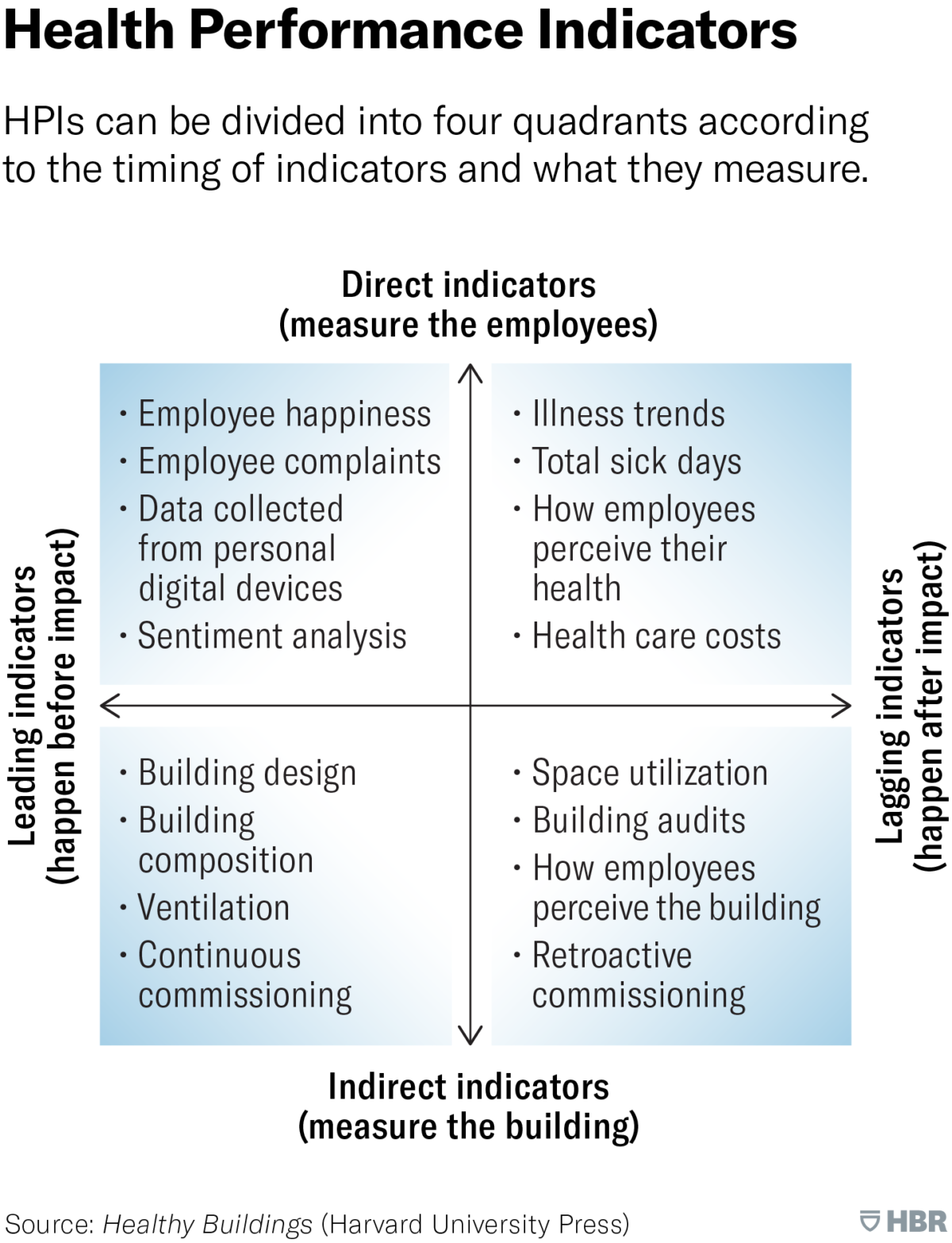“Sick Building Syndrome” has always been associated with dust, smoke, mold, asbestos and chemicals, coupled with inadequately performed air changes. Until now, there has not been a sudden, universal, untraceable and potentially deadly intrusion of airborne viral particulates coming from building occupants themselves.
Existing buildings, whether open or closed during the pandemic, compel consideration of health-based performance commissioning before opening.
Health Performance Indicators, or HPIs, can be used to measure indoor environmental quality.
The Harvard Business Review article, “What Makes an Office Building Healthy,” divides HPIs into four quadrants: leading and lagging indicators, and direct and indirect indicators. Direct indicators measure people, while indirect indicators measure the building. Leading factors can be measured and caught before an issue arises, whereas lagging ones can only be measured after the fact.
“Commissioning your building…can help you identify problems with your ventilation system before anyone is actually in the space.” As shown below, commissioning is leading factor and an indirect indicator.

As people re-enter their workplaces, the CDC-recommended framework is developed for building owners and companies to keep people safe. The public health “hierarchy of controls” is intended to plan for protecting workers from any hazard — biological, chemical, or otherwise, shown below:

Elimination of exposure. Minimize social interaction.
Substitution. Create [vertically integrated, where possible] work teams that can be physically isolated from one another.
Engineering controls and healthy building strategies. Use portable air purifiers and look into technologies like touchless entryways, elevators, sinks, and toilet flushes. At the building level, focus on improving ventilation, air quality, thermal health, moisture, dusts & pests, safety & security, water quality, noise, lighting and views.
Administrative controls. Cut occupant density by staggering shifts, alternate work-from-home and office days, repurpose unused and meeting space in buildings, and maintain social distancing. Implement policies to Skip the handshakes, and rules for hand washing.
Personal protective equipment (PPE). Employees should wear a mask on their way to and from work, and also as they enter the building and walk through common areas and take the elevators.
